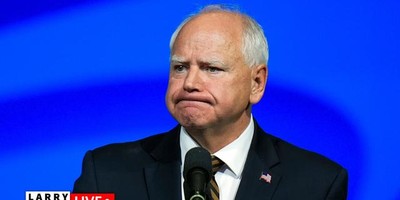By all accounts, the attack was planned with care and executed with precision. At two notorious Iraqi prisons, Abu Ghraib and Taji, al-Qaeda combatants last week used mortars, small arms, suicide bombers, and assault forces to free 400 prisoners, including several who had been on death row. AQ spokesmen hailed those released as “mujahedeen,” holy warriors, who will rejoin the jihad on battlefields throughout the Middle East and beyond.
Soon after, we were seeing headlines such as this: “Al Qaeda Is Back.”
Where had al-Qaeda gone? Dig deep in the memory hole — all the way to last summer. At the prestigious Aspen Security Forum, Peter Bergen, CNN’s national-security analyst and a director at the New America Foundation, gave a talk titled, “Time to Declare Victory: Al Qaeda Is Defeated.”
Lieutenant Colonel Thomas Lynch III (retired), a distinguished research fellow at the National Defense University, was writing and speaking widely on the same theme. And President Obama’s reelection campaign was making similar claims, e.g. “The tide of war is receding,” “Osama bin Laden is dead and General Motors is alive.” Mitt Romney hardly attempted to rebut the thesis.
I don’t like to say “I told you so” — oh, who am I kidding? Of course I do. But in this instance there is more than ample justification. Scholars at the Foundation for Defense of Democracies, in particular Thomas Joscelyn and Bill Roggio, have argued consistently and forcefully, based on solid evidence, that the May 2011 killing of Osama bin Laden, followed by the elimination of other al-Qaeda leaders, did not, by any stretch of the imagination, mean the demise of al-Qaeda.
Instead, it led AQ to adapt, evolve, and morph. It is essential to study these changes and probe their strategic significance — an assignment unlikely to be seriously undertaken by those convinced al-Qaeda swims with the fishes.
Recommended
On July 18, Joscelyn testified before the House Committee on Foreign Affairs, attempting to make clear to members of Congress that AQ has become “a global international terrorist network . . . that, despite setbacks, contests for territory abroad and still poses a threat to U.S. interests both overseas and at home.”
The nodes of AQ’s network are affiliates that pledge bayat, unswerving allegiance, to “core AQ” while retaining substantial operational autonomy. That makes them harder for intelligence operatives to monitor, penetrate, weaken, or eliminate. Nine years ago, FDD’s Jonathan Schanzer wrote a book called Al-Qaeda’s Armies predicting that such AQ affiliates would increasingly constitute the organization’s “outer perimeter and the pools from which new terrorists can be drawn. Indeed, al-Qaeda affiliates, in the Arab world and beyond, represent the next generation of the global terrorist threat.”
Since the waving of the “mission accomplished” banner last summer, AQ affiliates have killed an American ambassador in Libya, and hoisted their flag above the U.S. embassy in Cairo. They have taken the lead in the rebellion against the Assad dynasty in Syria. They have fought an American-backed government in Yemen, and they conquered much of Mali before French troops drove them back into the desert. They continue to slaughter Christians in Nigeria — more than a thousand last year. They have regenerated in Iraq since the departure of American troops, killing 700 people in July alone. They remain undefeated in Afghanistan and Pakistan, poised for the opportunity further American troop withdrawals will present. Last week, they attacked Turkish diplomats in Somalia. On Monday, AQ’s close ally, the Taliban, attacked a jail in northwest Pakistan, freeing as many as 200 prisoners.
Joscelyn and Roggio have been making another argument that has challenged the conventional wisdom: They maintain that al-Qaeda has long had a working relationship with Iran’s rulers. Two years ago the U.S. government formally confirmed that hypothesis, yet now as then many Iran experts deny the links, arguing that there is no way that Sunni AQ and Shia Iran could collaborate.
What those experts fail to grasp is that Iran’s rulers and al-Qaeda’s commanders, despite very real theological disagreements and differing strategic interests — indeed, they are literally at each other’s throats in Syria — are united in their commitment to what they see as the moral imperative of Islamic supremacy and domination. Their shared goal is a global revolution leading to the defeat or submission, or both, of those they regard not just as inferior, but also as “enemies of God.” America and Israel top both their lists.
This worldview is very difficult for Westerners to take seriously. Surely, there must be a less medieval explanation — perhaps grievances that can be addressed or fears that can be assuaged. But this conflict is deeper and more complex. Until that is understood, the U.S. and its allies cannot possibly devise a coherent strategic response — which is why 34 years after Iran’s revolution and twelve years after 9/11, we still don’t have one. That is another point that Joscelyn and Roggio have long been making, and which too many in the government and the foreign policy community have been either unable or unwilling to grasp.
























Join the conversation as a VIP Member